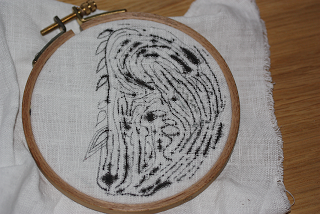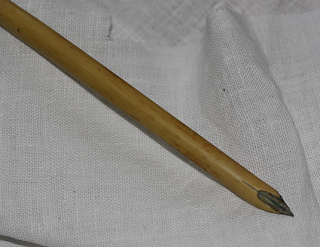There's fine weather outside, my little bicycle is equipped with normal summer tyres again, and somehow I feel like sitting in the sun and propping up my feet instead of working. But there's stuff to be done, of course.
My computer spring cleaning has yielded an amazing amount of free space on the hard disk, and there's still a good number of files to be deleted. The garden is mostly fit for the season of growth. My paper is coming along, with some more time for working on it scheduled for today. Bookkeeping is up-to-date for a change, and the new price list for the next season is almost finished. Almost... which leads me to a question.
I have found a source for good, fine and high-quality linen fabric, with much finer yarns and denser weave than normally available on the market. All of the four fabrics are perfectly suited for medieval embroidery, three of them also for counted work. And now I'm trying to decide whether to include pre-cuts in my stock of wares on offer or just sell it by the metre. Three of the cloth bolts are fairly wide, with 160 or 185 cm fabric width, so buying a metre would mean a lot of cloth.
Do you buy pre-cut fabric for embroidery? Or do you prefer to buy by the metre? And if you opt for pre-cuts, what size do you usually buy? Or do you buy kit packages instead of just the materials for a project?
My computer spring cleaning has yielded an amazing amount of free space on the hard disk, and there's still a good number of files to be deleted. The garden is mostly fit for the season of growth. My paper is coming along, with some more time for working on it scheduled for today. Bookkeeping is up-to-date for a change, and the new price list for the next season is almost finished. Almost... which leads me to a question.
I have found a source for good, fine and high-quality linen fabric, with much finer yarns and denser weave than normally available on the market. All of the four fabrics are perfectly suited for medieval embroidery, three of them also for counted work. And now I'm trying to decide whether to include pre-cuts in my stock of wares on offer or just sell it by the metre. Three of the cloth bolts are fairly wide, with 160 or 185 cm fabric width, so buying a metre would mean a lot of cloth.
Do you buy pre-cut fabric for embroidery? Or do you prefer to buy by the metre? And if you opt for pre-cuts, what size do you usually buy? Or do you buy kit packages instead of just the materials for a project?








